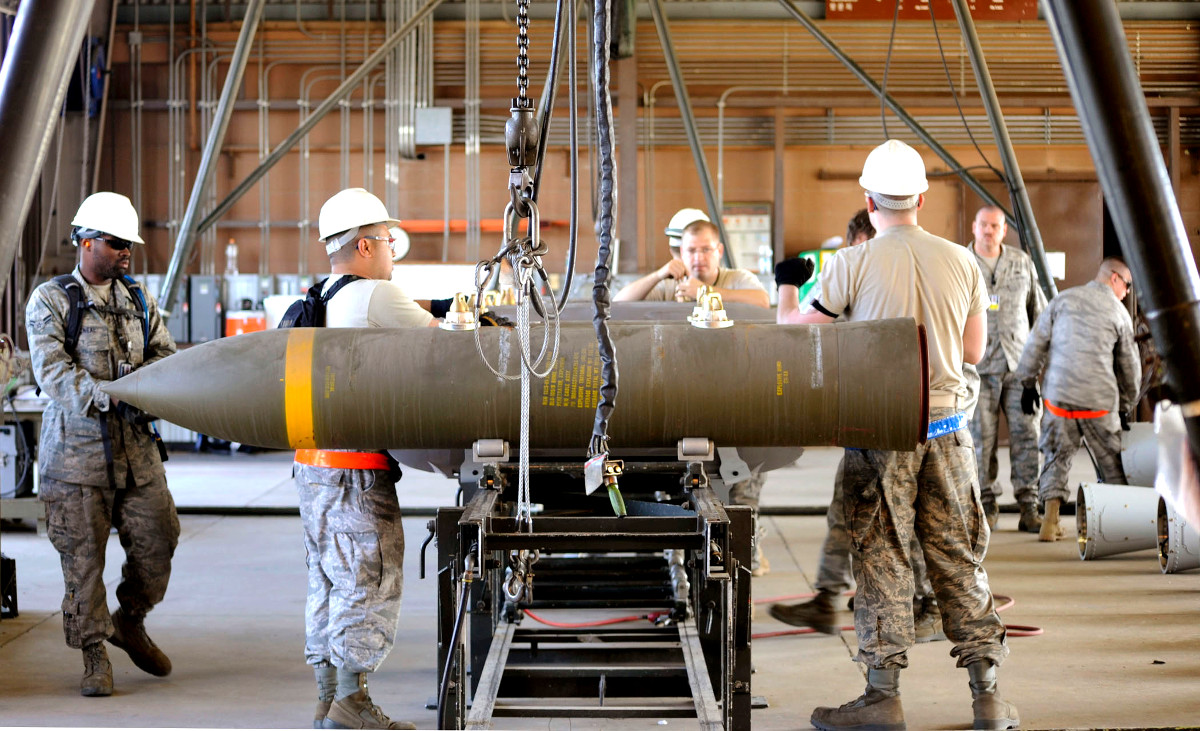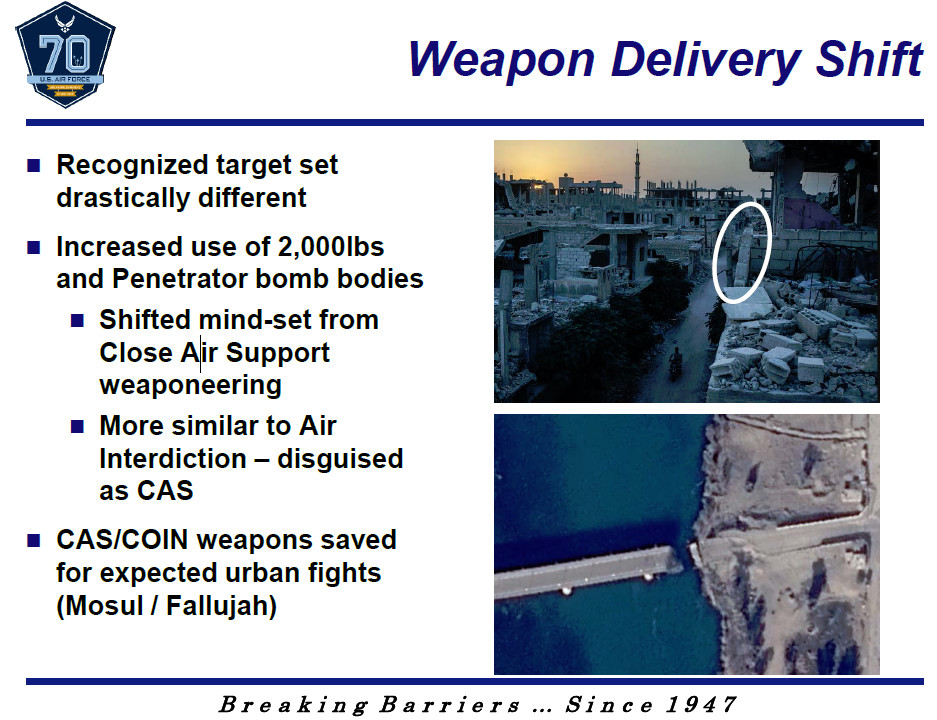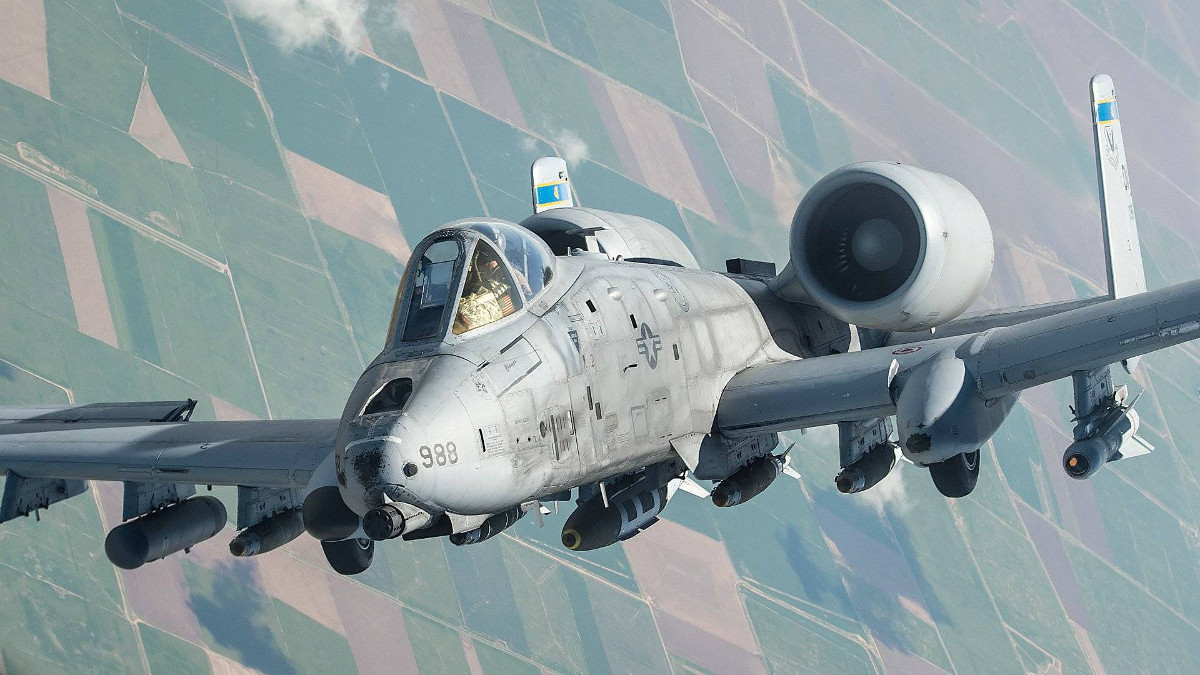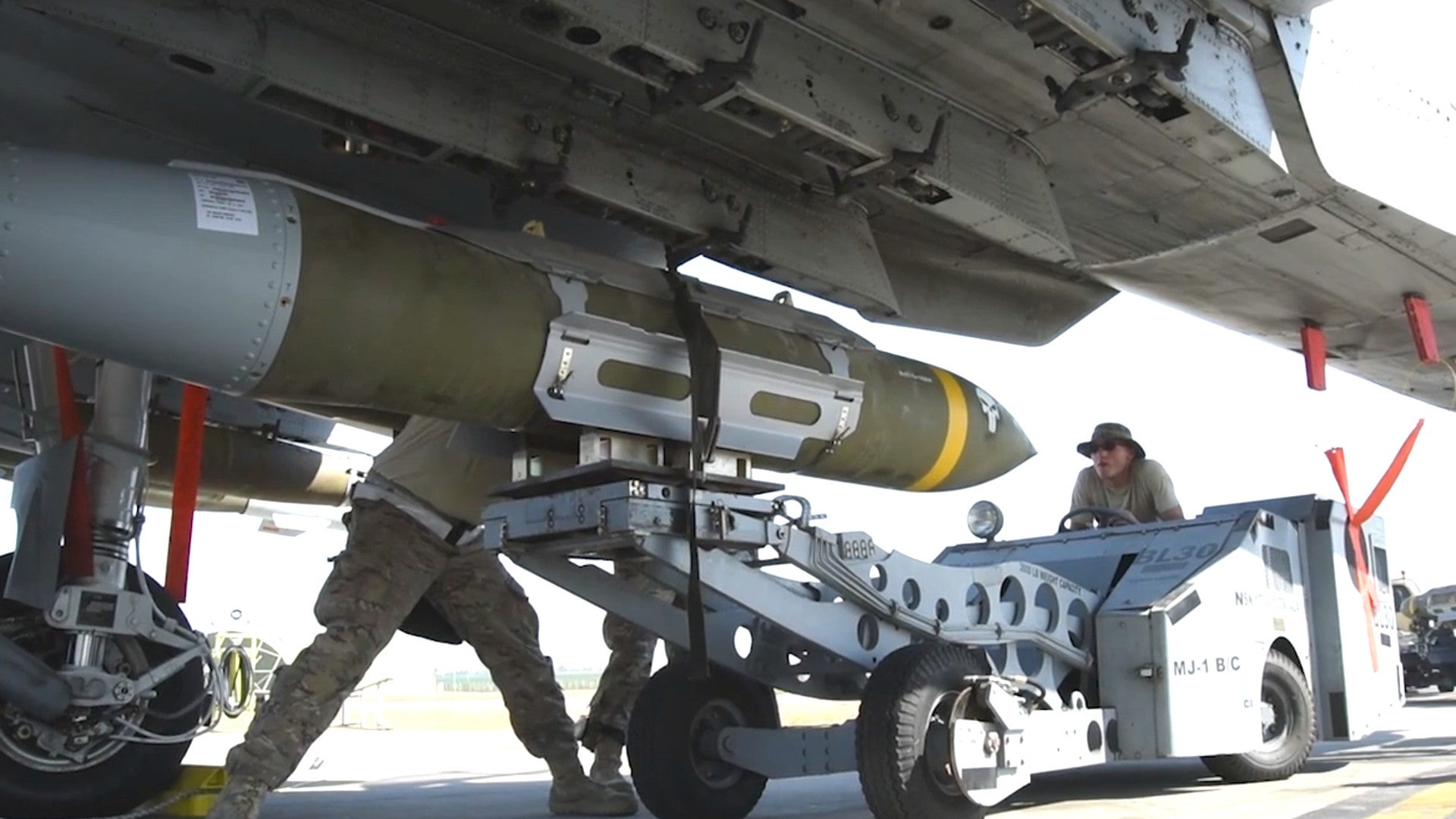For years now, the venerable A-10 Warthog has been one of the most active aircraft in the fight against ISIS in Iraq and Syria. Despite the U.S. Air Force’s long-standing argument that the blunt-nosed attackers can only perform a limited number of missions, the service continues to expand their capabilities, with the plane’s recently dropping bunker-busting GPS-guided Joint Direct Attack Munitions in combat for the first time.
Earlier in August 2017, Air Force revealed that A-10s assigned to the the 447th Air Expeditionary Group situated at Incirlik Air Base in Turkey had dropped the first 2,000-pound class GBU-31(V)3/B JDAM, which contains the BLU-109/B hard target penetrating warhead, on ISIS positions either in Iraq or Syria. An official video showed ground crews loading one of the weapons onto a Warthog alongside another GBU-31/B with a regular high explosive warhead. In keeping with a long-standing tradition of adding slogans and other art to bombs, someone painted on the logo of the comic book vigilante anti-hero the Punisher.

First introduced in the 1990s, the BLU-109 warhead has a one inch thick hardened steel case that can break through four to six feet of reinforced concrete. Despite its overall weight, the bomb has less than 600 pounds of explosive inside. The Air Force is in the process of purchasing a new, more reliable version of the weapon, known as the BLU-137/B.
As of August 2017, A-10s assigned to the 447th were averaging 750 strikes against ISIS every month, according to the Air Force. This makes the Warthogs “one of the most feared and combat effective aircraft in the fight,” U.S. Air Force Senior Airman Andrew Walck explained in the official news segment.

The month before, pilots from the 74th Fighter Squadron at Moody Air Force Base in Georgia, the “Flying Tigers,” had brought the Warthogs to take over for elements from the 354th Fighter Squadron out of Davis-Monthan Air Force Base in Arizona. A-10s have been flying over Iraq and Syria continuously since November 2014, making good use of their ability to carry a large and diverse array of stores on each sortie, along with the integral GAU-8/A Avenger cannon, and loiter over target areas for extended periods of time.
Based on what we’d seen, their primary weapons had been 500-pound class GBU-38/B JDAMs, GBU-12/B Paveway II laser-guided bombs, and GBU-58/B dual-mode laser JDAMs. AGM-65 Maverick air-to-ground missiles and rocket pods loaded with laser-guided 70mm Advanced Precision Kill Weapon System (APKWS) II rockets have been common, as well.

In March 2017, the Air Force revealed that it spent the first months of its aerial campaign against ISIS using the wrong tactics and weapons. Variants of the GBU-38/Bs with special low-collateral damage warheads in particular were of limited utility against large static targets, such as oil infrastructure, and tunnel networks.
In a presentation at the National Defense Industry Association’s Precision Strike Annual Review, U.S. Air Force Major Brian Baker said that this experience had led directly to an increased use of 2,000-pound class BLU-109 penetrating warheads and GBU-31/Bs in general. The main platforms for these weapons were B-1B Bone and then B-52 BUFF bombers, as well as F-15E Strike Eagle multi-role jets.

However, in May 2017, pictures began to emerge of A-10s carrying GBU-31/Bs, but only with the regular high-explosive warheads. Now the Warthogs are bringing bunker busters to the fight, too.
We don’t know if the fighting in Iraq or Syria changed in such a way to make integrating the bombs on the A-10 a priority. Adding the capability to the Warthogs would make good sense in general, if just to give commanders the added flexibility of another aircraft that could carry the weapons.

There doesn’t appear to be any shortage of relevant targets, either. Though the U.S.-led coalition has helped local forces in Iraq and Syria dramatically push back ISIS, the group continues to occupy significant territory.
In Syria, the American-supported Syrian Democratic Forces (SDF) are still fighting to liberate the city of Raqqa, which has been ISIS de facto capital, as well as other areas in Syria,. Iraqi troops and police elements have begun a push to retake the city of Tal Afar, as well.
Just on Aug. 17, 2017, coalition aircraft blew up an ISIS headquarters and “media center” near Dayr Az Zawr, Syria, and destroyed two tunnels and damaged three bridges in Iraq’s Tal Afar, according to the Pentagon’s daily strike reporting. These are exactly the kind of targets that Major Baker had identified as requiring 2,000-pound weapons in his March briefing.

Terrorist tunnels in particular continue to be major threat and ISIS has stepped up their use in no small part to try and avoid coalition air strikes. In Raqqa specifically, they have been a major impediment for SDF forces, especially combined with improvised explosive devices, car bombs, and other booby-traps.
“ISIS has had time to rig up thousands of fiendishly clever explosives and to dig extensive tunnels throughout the city,” U.S. Army Colonel Ryan Dillon, the top spokesman for the U.S. military’s task force fighting ISIS, told members of the press on Aug. 16, 2017. “They are using these tunnels and improvised explosive devices to attack advancing SDF fighters, as well as noncombatants trying to flee their homes. In the last two days, ISIS mounted a planned counterattack through these tunnels, which the SDF managed to repulse.”

The BLU-109-armed JDAMs are ideally suited to blasting down into these passageways and sealing them up. It seems likely that the A-10s have already been flying from Incrilik in support of the Raqqa operation.
“It’s nice to see the bombs get loaded and the jets come back without them,” Senior Airman Joshua Coll, who leads one of the teams that loads weapons onto the Warthogs at the base in Turkey, told the service’s reporters. “That means that hostile targets died. That means we got the mission done. We either took out a high value target or we’re saving our troops on the ground.”
With the GBU-31(V)3/Bs added to their arsenal, the A-10s look set to keep flying increasingly diverse missions, and more of them, against ISIS.
Contact the author: joe@thedrive.com
